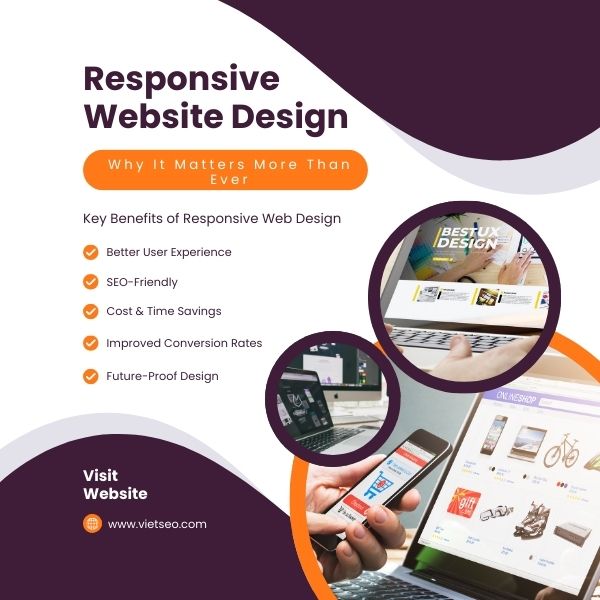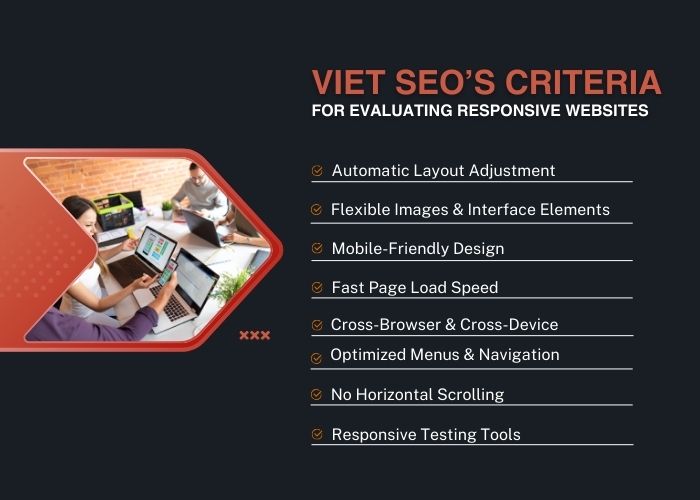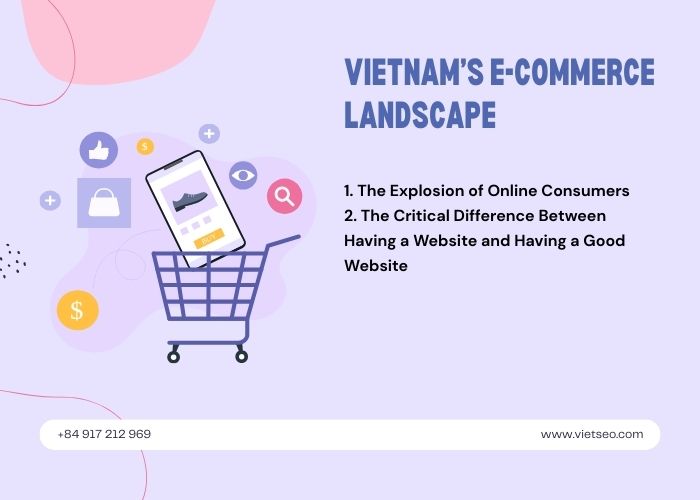Responsive Website Design: Importance, Benefits & Key Evaluation Criteria
Responsive Website Design – Why It Matters More Than Ever
Today’s users expect a website to work seamlessly no matter what device they’re using. Whether they’re browsing on a large desktop monitor at the office, scrolling on a tablet at home, or quickly checking something on their smartphone, the experience should feel smooth, intuitive, and effortless.
This is where responsive website design comes in. As mobile usage continues to skyrocket and has already become the fastest-growing channel for accessing the web, optimizing for smaller screens is no longer optional—it’s essential. If your website isn’t mobile-friendly, you risk frustrating visitors with slow load times, awkward layouts, or difficult navigation. And in the online world, frustration quickly translates into lost opportunities.
The reality is that more and more customers are completing their research, shopping, and even final transactions directly from their mobile devices. A poorly optimized site doesn’t just hurt user satisfaction; it directly impacts your conversion rates and, ultimately, your revenue. In other words, responsive web design isn’t just about “looking good” on mobile - it’s about keeping customers engaged, building trust, and ensuring your business stays competitive in the digital-first era.
What Is Responsive Web Design?
Responsive web design—sometimes called flexible design—is a modern approach to building websites that automatically adapt to any screen size. Whether someone is browsing on a desktop computer, laptop, tablet, or smartphone, the layout, images, text, and navigation elements all adjust to provide the best possible viewing experience.
Instead of creating separate versions of a site for different devices, responsive design uses CSS and JavaScript techniques to dynamically adjust how content is displayed based on screen resolution. This not only simplifies the development process but also improves website usability and overall performance across platforms.
In Vietnam and worldwide, SEO professionals consider responsive design a cornerstone of modern web strategy. It enhances user experience, aligns with Google’s mobile-first indexing, and ensures your website remains competitive in both local and global search results.
Key Benefits of Responsive Web Design
- Better User Experience – Visitors can navigate your site easily without awkward zooming, pinching, or horizontal scrolling.
- SEO-Friendly – Google prioritizes mobile-friendly websites, helping you achieve higher rankings and attract more organic traffic.
- Cost & Time Savings – You only need to manage one version of your site, reducing both development and long-term maintenance costs.
- Improved Conversion Rates – A smooth, intuitive interface keeps users engaged and encourages them to take action—whether that’s making a purchase, filling out a form, or subscribing.
- Future-Proof Design – A responsive site adapts automatically to new devices, screen sizes, and browsers, so your website stays modern without constant redesigns.
Responsive Design & AI/Personalization – The Future Trend
Responsive website design today goes beyond simply looking good on every device. Increasingly, it is being combined with artificial intelligence (AI) and personalized user experiences. For example, a website can adapt not only to screen resolution but also to the user’s context - whether they are outdoors on a weak mobile connection or at the office with a large monitor. In these cases, the site might:
- Automatically serve lower-resolution images for faster loading on 3G/4G networks.
- Highlight key content such as CTAs, purchase buttons, maps, or phone numbers more prominently on smaller screens.
- Recommend products or services based on browsing behavior across different devices.
This shows that the future of responsive design is not only about adapting layouts but also about adapting experiences—reacting dynamically to the real-world circumstances and individual needs of each user.
Criteria for Evaluating Responsive Website
Not every website that looks “okay” on mobile is truly responsive. At Viet SEO, we apply a clear set of criteria to evaluate whether a site delivers a seamless experience across all devices.
-
Automatic Layout Adjustment
- The layout adapts instantly when switching between desktop, tablet, and mobile.
- Content fits naturally within the screen, without overflow or the need for horizontal scrolling.
-
Flexible Images & Interface Elements
- Images, videos, buttons, and menus scale properly across different screen sizes.
- Media is optimized to stay sharp without sacrificing loading speed.
-
Mobile-Friendly Design
- Buttons, links, and forms are large enough to interact with easily on touchscreens.
- Text remains readable without requiring users to zoom in.
-
Fast Page Load Speed
- Pages load quickly on both Wi-Fi and mobile data.
- CSS, JavaScript, and images are optimized to reduce unnecessary delays.
-
Cross-Browser & Cross-Device Compatibility
- The website works smoothly on Chrome, Safari, Firefox, Edge, and other popular browsers.
- No display or functionality issues occur on different mobile devices.
-
Optimized Menus & Navigation
- Menus adapt to smaller screens (e.g., switching to a hamburger menu).
- Users can quickly find and access key pages without confusion.
-
No Horizontal Scrolling
- Content fits neatly within the screen on mobile and tablet.
- Elements are never cut off or misaligned.
-
Responsive Testing Tools
- Google’s Mobile-Friendly Test helps confirm mobile readiness.
- Browser Responsive Design Mode allows simulation of the site across multiple devices.
By evaluating these factors, Viet SEO ensures that your website is more than just “mobile-friendly.” A truly responsive site enhances user engagement, reduces bounce rates, and strengthens overall SEO performance—keeping your business competitive in today’s digital-first world.
Conclusion
Responsive web design is no longer a passing trend—it’s now the industry standard for building successful websites. A truly responsive site does more than just “look good” on different screens; it delivers a seamless user experience, improves SEO performance, reduces long-term development costs, and creates more opportunities for conversions.
At Viet SEO, we view responsive design as a core foundation of any modern digital strategy. By ensuring your website adapts flawlessly to desktops, tablets, and mobile devices, you not only meet user expectations but also strengthen your competitive edge in today’s fast-moving online marketplace.
Just as important, businesses should regularly identify and fix common web design mistakes that hurt responsiveness, usability, and performance. A well-optimized website keeps users engaged, builds trust, and drives measurable results.
Make sure your website is responsive across all devices—because every visitor deserves the best experience, and every business deserves the maximum return on its digital investment.




